Read time 2-3 mins
Back injuries and persistent lower back pain can be debilitating and frightening. In the past, back pain was often treated with periods of prolonged rest and avoidance of activity. It is now well understood, however, that this leads to decreased function and increased pain in the long term, and that an evidence based, specific rehabilitation program produces much more positive results.
We often get asked in our Sandyford physio clinic, Ive slipped a disc, will slipped disc pain go away? Or what are slipped disc pain symptoms. What is the treatment for slipped discs or do I need surgery for a slipped disc?
It is similar for lower back pain where questions range from simple questions like ‘why do i have back pain lower right side? to others like ‘ Ive had lower back pain all my life, is this back pain ever going away??’ Often these people come through the door and thankfully we can help them too.
The British Journal of Sports Medicine recently published “Back to basics: 10 facts every person should know about back pain” (O’Sullivan et al 2020) which can help us to understand why back pain does not need to be debilitating and frightening, and how you can begin to take control of your back pain.
1 – “Persistent back pain can be scary, but it’s rarely dangerous”
Ongoing back pain can be really frightening as it can make us feel as though we cannot do normal activities. Through thorough assessment your physiotherapist will be able to identify whether there is a cause for serious concern – the vast majority of the time the cause can be addressed by specific rehabilitation.
2 – “Getting older is not a cause of back pain”
This is a common belief which we wholeheartedly reject. Research has shown that getting older is not a cause of back pain, and it is never too late to begin specific, evidence-based rehabilitation
3 – “Persistent pain is rarely associated with serious tissue damage”
Often, we assume that if we are experiencing pain, it must be because damage is occurring. In persistent lower back pain, this is not the case. If your pain has been ongoing for > 3 months, tissue healing of any injury will already have occurred, so this must mean that other factors are contributing to your pain. Your physiotherapist will help you to identify these factors and to implement strategies to lessen their impact.
4 – “Scans rarely show the case of back pain”
In most cases, it is not necessary to have a scan in order to overcome your back pain. Many of the common findings on scans, i.e. disc bulges, degeneration and arthritis are actually entirely normal, and are not necessarily associated with pain. Rather than focusing on the findings on scans, in most cases back pain can be overcome by specific rehabilitation targeting strength, movement and biomechanical factors.
5 – “Pain with exercise and movement doesn’t mean you are doing harm”
When pain has been present for a while, the spine and the muscles in the back can become sensitive to movement. If you are experiencing pain with activity it may be due to how sensitive these structures have become – it does not mean that you are causing damage. It is has been shown that exercise and movement, even if uncomfortable at the beginning, are one of the most effective ways to improve back pain. Your physiotherapist will guide you through a graded program and will help you understand what pain levels are safe to work through.
6 – “Back pain is not caused by poor posture”
In the past, it was believed that poor posture or slouching caused back pain. It is now understood that many different postures are completely healthy and normal for the back, and that everyday tasks such as sitting, bending and lifting are safe activities. What is more likely is staying in one posture for prolonged periods may make your back ache a little but our backs are actually really robust!
7 – “Back pain is not caused by a weak core”
Often blamed as a cause of lower back pain, a weak core is never the sole cause, but a contributing factor amongst lots of others. We want the core to be strong when we need these muscles switched on and working, but we don’t want to be tense all the time. It is just as important to learn to relax your “core” as it is to strengthen it.
8 – “Backs do not wear out with everyday loading and bending”
Backs are strong, and there is no reason that everyday activities should have to be avoided forever. Bending, lifting, twisting, walking and running are all safe activities that strengthen the body and the back. Your physiotherapist will guide you through a graduated return to these activities which keeps them entirely safe and healthy.
9 – “Pain flare-ups don’t mean you are damaging yourself”
Pain flare ups are normal. While they can be frightening, they usually are not a sign of damage. It is important to learn how to manage and overcome flare ups, and to learn what specifically triggers flare ups for you – this can be things like stress, a sudden change in activity, poor sleep and mood. The most important thing to do during a flare up is to keep moving!
10 – “Injections, surgery, and strong drugs usually aren’t a cure”
Sometimes Injections, surgery, and pain relief are part of the journey to recovery, but often they aren’t very effective for persistent pain. It is vital that we understand that even if we use these modalities, we will still need to address the underlying strength, movement and biomechanical factors that contributed to the development of pain in the first place. Often an evidence-based rehabilitation plan can help you to avoid these high risk interventions altogether.



